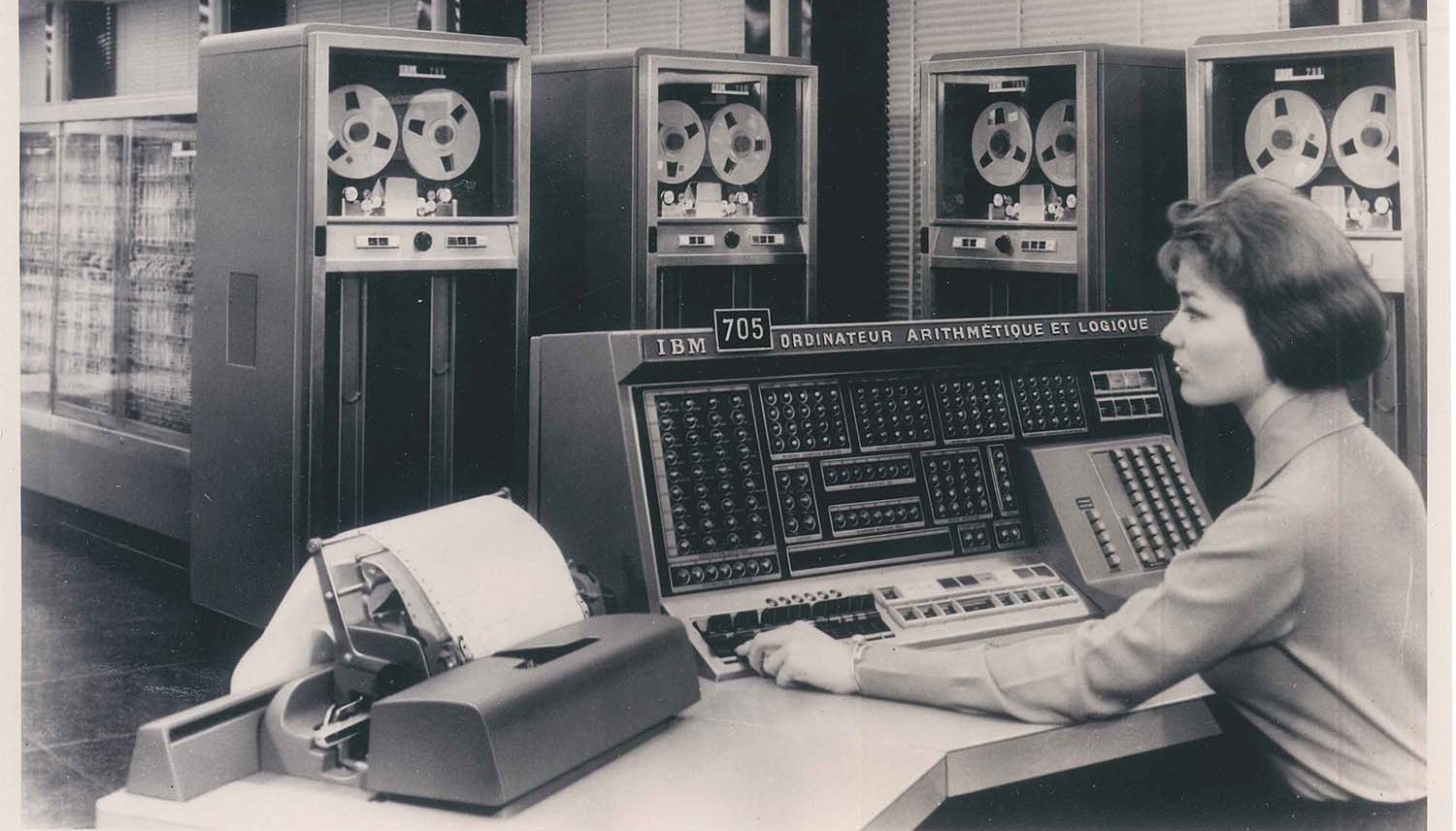Introduction
Commercial banking plays a vital role in the modern economy as it serves as a financial intermediary between individuals, businesses, and the government. It is a fundamental pillar of the banking industry, providing a range of services that cater to the financial needs of various stakeholders.
Commercial banking refers to the activities carried out by banks to attract deposits, offer loans, and provide a wide range of financial services to individuals and businesses. These banks play a crucial role in facilitating economic growth and development by mobilizing savings and channeling them towards productive investments.
Commercial banks serve as a bridge between those who have excess funds (depositors) and those who require funds (borrowers). They accept deposits from individuals and businesses, pay interest on those deposits, and lend those funds to borrowers in the form of loans and credit facilities. Additionally, commercial banks offer a variety of services such as financial advice, payment processing, treasury management, and trade finance.
The core functions of commercial banks revolve around maintaining liquidity, managing risk, and generating profits. They do this by carefully assessing the creditworthiness of borrowers, pricing loans accordingly, managing assets and liabilities, and diversifying their portfolios to mitigate risk.
In recent years, the scope of commercial banking has expanded beyond traditional brick-and-mortar branches. With the advent of technology, commercial banks have embraced digital transformation, offering online and mobile banking services to cater to the changing needs and preferences of customers.
Commercial banking is a highly regulated sector, with stringent rules and regulations set by regulatory authorities to safeguard the interests of depositors and ensure the stability of the financial system. The regulations cover areas such as capital adequacy, liquidity management, consumer protection, and anti-money laundering.
In this article, we will explore the functions of commercial banks, the services they provide, the types of commercial banks, and their role in the economy. We will also discuss the challenges faced by commercial banks in an ever-evolving landscape.
What Is Commercial Banking?
Commercial banking is a sector of the banking industry that focuses on providing financial services to businesses, corporations, and institutions. It involves the management of deposits, loans, and other financial transactions related to the business operations of clients.
Commercial banks act as intermediaries, accepting deposits from customers and utilizing those funds to offer loans and credit facilities. They play a crucial role in stimulating economic growth by providing businesses with the necessary capital to expand their operations, invest in new ventures, and create employment opportunities.
One of the primary functions of commercial banks is to mobilize savings from individuals and corporations. Depositors entrust their funds to commercial banks, which guarantee the safety and security of their deposits. In return, banks offer interest on these deposits, encouraging individuals to save and maintain a positive cash flow within the banking system.
On the lending side, commercial banks offer various types of loans and credit facilities to businesses. These can range from working capital loans to finance everyday operations, to long-term loans for capital investments, such as purchasing equipment or expanding infrastructure. Commercial banks assess the creditworthiness of borrowers and determine the interest rates and terms of the loans based on factors such as the borrower’s financial history, collateral, and risk profile.
Aside from deposits and loans, commercial banks also offer a range of financial services to meet the diverse needs of businesses. These services include cash management, foreign exchange transactions, trade finance, treasury management, and investment advisory. By providing these services, commercial banks help businesses efficiently manage their finances, mitigate risks, and optimize cash flow.
Furthermore, commercial banks facilitate domestic and international payment transactions. Through services like electronic funds transfers, wire transfers, and issuing and processing checks, they enable businesses to conduct seamless financial transactions with suppliers, customers, and partners.
It is important to note that commercial banking is distinct from investment banking. While commercial banks primarily focus on providing banking services to businesses, investment banks specialize in financial advisory, underwriting securities, and facilitating capital market transactions.
In summary, commercial banks play a vital role in the economy by channeling funds between savers and borrowers, providing financial services to businesses, and contributing to economic growth and stability. They serve as a cornerstone of the banking industry, supporting the financial needs of both individual and corporate clients.
Functions of Commercial Banks
Commercial banks perform a wide range of functions that are essential for the smooth functioning of the economy. These functions can be categorized into three main areas: intermediation, facilitation, and regulation.
1. Intermediation: One of the primary roles of commercial banks is to act as financial intermediaries. They gather funds from various sources, such as deposits from individuals and businesses, and then lend those funds to borrowers in need of capital. This intermediation process plays a vital role in mobilizing savings and directing them towards productive investments. Commercial banks evaluate the creditworthiness of borrowers, set interest rates, and manage risks associated with lending, ensuring a balance between depositors seeking returns on their savings and borrowers in need of capital.
2. Facilitation: Commercial banks facilitate the smooth functioning of financial transactions and provide various services to businesses. They offer checking accounts, savings accounts, and other deposit products, providing a safe and convenient place for individuals and businesses to store and manage their money. Commercial banks also offer loans and credit facilities, financing both short-term and long-term needs of businesses, such as working capital, capital expenditure, and expansion. Additionally, they provide payment processing services, enabling businesses to execute domestic and international transactions efficiently. Through trade finance services, they facilitate import and export transactions by offering letters of credit, documentary collections, and financing options to bridge gaps in cash flow between buyers and sellers.
3. Regulation: Commercial banks are subject to a wide range of regulations and guidelines imposed by regulatory authorities. These regulations aim to ensure the safety and soundness of the banking system, protect the interests of depositors, and maintain overall financial stability. Commercial banks are required to maintain specified capital adequacy ratios to support their lending activities and absorb potential losses. They are also expected to adhere to anti-money laundering and know-your-customer regulations to prevent illicit financial activities. Furthermore, commercial banks are subject to periodic audits and examinations by regulatory bodies to assess their financial health and compliance with regulatory requirements.
In addition to these core functions, commercial banks also fulfill other roles that contribute to the overall functioning of the economy. They act as custodians for valuable assets such as jewelry and important documents, providing safe deposit boxes for secure storage. Commercial banks also offer financial advisory services, assisting individuals and businesses in making informed decisions regarding their investments, insurance, and retirement planning.
Overall, the functions performed by commercial banks are vital for the efficient functioning of the economy. Through intermediation, facilitation, and regulation, commercial banks play a crucial role in allocating financial resources, supporting businesses, and ensuring the stability of the banking system.
Services Provided by Commercial Banks
Commercial banks offer a wide range of services to meet the diverse financial needs of individuals, businesses, and institutions. These services play a crucial role in facilitating economic activities, promoting financial stability, and providing convenience to customers. Here are some of the key services provided by commercial banks:
1. Deposit Accounts: Commercial banks offer various types of deposit accounts, such as savings accounts, checking accounts, and certificates of deposit. These accounts provide individuals and businesses with a safe and secure place to store their money. Customers can access their funds, make withdrawals, and receive interest on their deposits based on the type of account. Commercial banks also ensure the safety of deposits by providing deposit insurance up to a certain limit, protecting customers from losses in case of bank failures.
2. Loans and Credit Facilities: One of the primary services offered by commercial banks is providing loans and credit facilities to individuals and businesses. These loans can be in the form of personal loans, mortgage loans, auto loans, or business loans. Commercial banks assess the creditworthiness of borrowers and determine the terms and interest rates based on factors such as credit history, collateral, and risk profile. By offering loans, commercial banks provide individuals with the means to purchase homes, cars, and finance other personal expenses. For businesses, loans and credit facilities enable them to fund their operations, invest in new projects, and manage their working capital needs.
3. Payment and Transaction Processing: Commercial banks facilitate the processing of domestic and international payments. They offer services such as online banking, wire transfers, automated clearinghouse (ACH) transactions, and issuing checks. These services enable individuals and businesses to transfer funds securely and efficiently, making payments for goods, services, and bills. Commercial banks also provide merchant services, allowing businesses to accept credit and debit card payments from customers.
4. Treasury Management: Commercial banks provide treasury management services to businesses to optimize their cash flow and manage their liquidity. These services include cash management, working capital management, and short-term investments. By partnering with commercial banks, businesses can streamline their receivables and payables, reduce transaction costs, and utilize various tools for cash forecasting and risk management.
5. Trade Finance: Commercial banks play a vital role in facilitating international trade by offering trade finance services. They provide letters of credit, documentary collections, and trade financing options to businesses engaged in import and export activities. These services help mitigate the risks associated with foreign trade, provide financing for trade transactions, and ensure smooth cross-border transactions.
6. Investment and Wealth Management: Many commercial banks offer investment and wealth management services to individuals and businesses. These services include financial planning, investment advisory, portfolio management, and retirement planning. Commercial banks employ investment professionals who provide guidance and assist clients in making informed investment decisions based on their financial goals and risk tolerance.
These services provided by commercial banks contribute to the overall financial well-being of individuals and businesses. They offer convenience, access to capital, risk management solutions, and financial expertise, which are vital for economic growth and stability.
Types of Commercial Banks
The commercial banking sector encompasses various types of banks that cater to different segments of the market and provide specialized services. Understanding the different types of commercial banks can help individuals and businesses choose the right banking partner based on their specific needs. Here are some of the common types of commercial banks:
1. Retail Banks: Retail banks, also known as consumer banks, are the most common type of commercial banks. They serve individual customers and offer a wide range of banking services, including deposit accounts, loans, credit cards, and payment processing. Retail banks typically have a large network of branches and ATMs, making it convenient for customers to access their services. These banks focus on providing personalized services and meeting the financial needs of individuals, such as managing savings, making payments, and obtaining personal loans.
2. Commercial Banks: Commercial banks primarily cater to the banking needs of businesses, ranging from small enterprises to large corporations. They offer services such as business loans, lines of credit, cash management, trade finance, and treasury management. Commercial banks understand the unique financial requirements of businesses and provide customized solutions to support their growth and operations. These banks often have dedicated relationship managers who work closely with business clients to provide guidance and financial expertise.
3. Community Banks: Community banks are local or regional banks that focus on serving specific communities or geographical areas. These banks play a vital role in providing financial services to individuals and small businesses in their respective communities. Community banks have a strong connection with their customers and often engage in community development activities. They emphasize personalized service, relationship banking, and local decision-making, which sets them apart from larger commercial banks.
4. Business Banks: Business banks are specialized commercial banks that concentrate primarily on serving the banking needs of businesses. They provide comprehensive financial solutions, including business loans, lines of credit, cash management, payroll services, and merchant services. Business banks often have industry-specific knowledge and expertise, making them an ideal choice for businesses operating in specific sectors or industries.
5. International Banks: International banks have a global presence and offer banking and financial services across different countries and jurisdictions. These banks serve multinational corporations, financial institutions, and individuals with international financial needs. International banks provide services such as international trade finance, foreign exchange transactions, cross-border payments, and global treasury services. They have a deep understanding of global markets and regulatory frameworks, enabling them to support clients in their international business activities.
6. Investment Banks: Although investment banks are distinct from commercial banks, they are worth mentioning within the broader banking landscape. Investment banks focus on providing financial advisory, underwriting securities, and facilitating capital market transactions, such as mergers and acquisitions, initial public offerings, and bond issuance. Unlike commercial banks, investment banks typically do not engage in traditional deposit-taking and lending activities.
These different types of commercial banks cater to specific segments and have their own unique offerings and areas of expertise. Understanding the distinctions between these banks can help individuals and businesses select the right banking partner that aligns with their financial goals and requirements.
Differences Between Commercial and Investment Banks
While both commercial banks and investment banks are part of the broader banking industry, they serve distinct roles and have different focuses. Understanding the differences between these two types of banks is essential for individuals and businesses when considering their banking and financial needs. Here are some key differences between commercial and investment banks:
1. Core Functions: Commercial banks primarily focus on offering financial services to individuals and businesses. They accept deposits, provide loans, offer various banking products, and facilitate payment transactions. Commercial banks act as financial intermediaries and play a crucial role in mobilizing savings and providing credit to support economic growth. On the other hand, investment banks focus on providing financial advisory, underwriting securities, and facilitating capital market transactions. They assist corporations and governments in raising capital through underwriting IPOs, handling mergers and acquisitions, and issuing bonds or other securities.
2. Deposit and Lending Activities: Commercial banks engage in deposit-taking activities, where individuals and businesses can deposit their funds and earn interest on those deposits. These banks utilize these deposits to offer loans and credit facilities to borrowers. On the other hand, investment banks do not accept deposits from the public, nor do they provide traditional lending services to individuals or businesses.
3. Regulation: Commercial banks are subject to stringent regulations that ensure the safety and stability of the banking system. They face regulatory oversight to maintain capital adequacy, liquidity ratios, consumer protection, and anti-money laundering measures. Investment banks, on the other hand, are subject to different regulations and have separate oversight bodies that focus on their activities in capital markets, disclosure requirements, and compliance with securities regulations.
4. Risk Profile: Commercial banks generally have a lower risk profile compared to investment banks. Commercial banks primarily engage in retail and commercial lending activities, which are considered less risky due to the diversity of borrowers and collateral. Investment banks, however, heavily rely on capital market transactions, which involve higher levels of risk and volatility. The investment banking business is more exposed to market fluctuations and economic conditions, potentially leading to higher risk and reward.
5. Clientele: Commercial banks cater to a broad range of clientele, including individuals, small businesses, and large corporations. They offer a wide array of services and products to meet the diverse financial needs of their clients. In contrast, investment banks primarily serve institutional clients, such as large corporations, financial institutions, governments, and high-net-worth individuals. Their services are often tailored to the specific needs of these clients in the areas of capital markets, mergers and acquisitions, and strategic financial advice.
6. Profit Model: Commercial banks generate revenue primarily through the interest spread between the rates they offer on deposits and the rates they charge on loans. They also earn income from fees and commissions on various banking services. Investment banks, on the other hand, derive a significant part of their revenue from fees earned through capital market transactions, advisory services, and underwriting securities.
While commercial banks and investment banks are distinct in their functions and focus, it is worth noting that some financial institutions operate as both commercial and investment banks, offering a broader range of services to their clients. These institutions often have separate divisions or subsidiaries dedicated to different banking activities.
Understanding the differences between commercial banks and investment banks is crucial when evaluating banking options and determining which type of institution aligns with specific financial needs and goals.
Role of Commercial Banks in the Economy
Commercial banks play a crucial role in the economy by providing essential financial services and supporting economic growth and stability. Their activities have a significant impact on individuals, businesses, and the overall functioning of the financial system. Here are some key roles commercial banks play in the economy:
1. Mobilizing Savings and Allocating Capital: Commercial banks act as intermediaries between savers and borrowers. They mobilize savings from individuals and businesses by offering deposit accounts. These funds are then allocated to borrowers, including individuals, small businesses, and large corporations, to finance various activities such as consumer spending, investment, and infrastructure development. This allocation of capital is crucial for economic growth, as it facilitates productive investments and promotes the efficient allocation of resources.
2. Providing Credit and Financing: One of the primary functions of commercial banks is to provide credit and financing to individuals and businesses. Through loans, lines of credit, and other credit facilities, commercial banks meet the short-term and long-term funding needs of businesses. They offer capital for working capital, equipment purchase, expansion, and other business activities. By facilitating access to credit, commercial banks foster entrepreneurship, encourage investment, and stimulate economic activities.
3. Promoting Financial Inclusion: Commercial banks play a vital role in promoting financial inclusion by providing access to banking services for individuals and businesses of all segments. They offer basic banking services, such as savings accounts, checking accounts, and payment services, to individuals who may not have traditionally had access to formal financial services. Commercial banks also support small businesses and startups by offering tailored financial solutions and advisory services, contributing to inclusive economic growth.
4. Managing Payment System: Commercial banks facilitate the smooth functioning of the payment system, enabling the exchange of funds among individuals, businesses, and organizations. Through the issuance of debit and credit cards, electronic fund transfers, and mobile banking services, they provide convenient and secure means of payment, reducing reliance on cash transactions. Commercial banks also offer services for international payments, helping facilitate global trade and financial transactions.
5. Safeguarding Deposits and Ensuring Financial Stability: Commercial banks play a crucial role in safeguarding the deposits of individuals and businesses. They manage risk and ensure the safety of depositor funds through various mechanisms, including deposit insurance provided by government-backed agencies. Commercial banks also contribute to financial stability by adhering to prudential regulations, maintaining adequate capital reserves, and managing risks associated with lending and investment activities. Their stability and resilience in times of economic uncertainties are essential for maintaining confidence in the financial system.
6. Supporting Government and Public Financing: Commercial banks act as important intermediaries for government financing. They facilitate the issuance of government bonds, assist in the management of public debt, and provide banking services to government institutions. They also help facilitate financial transactions related to public infrastructure projects and investments, supporting economic development efforts funded by the government.
Overall, commercial banks play a critical role in the economy by mobilizing savings, providing credit and financing, promoting financial inclusion, managing the payment system, ensuring the safety of deposits, and supporting government and public financing. Their activities contribute to economic growth, stability, and the effective functioning of the financial system.
Regulations and Policies for Commercial Banks
Commercial banks operate in a highly regulated environment to ensure the stability and integrity of the financial system and protect the interests of depositors and borrowers. Regulatory frameworks and policies are put in place to govern the activities of commercial banks and mitigate risks. Here are some of the key regulations and policies for commercial banks:
1. Capital Adequacy: Capital adequacy regulations require commercial banks to maintain a minimum level of capital relative to their risk-weighted assets. This ensures that banks have a sufficient buffer against potential losses and can absorb financial shocks. Regulatory authorities set capital adequacy ratios, such as the Basel III framework, to enhance the resilience of commercial banks and safeguard the banking system as a whole.
2. Liquidity Management: Commercial banks are required to manage their liquidity effectively to meet their financial obligations, including the ability to fund withdrawals by depositors and settle payment obligations. Regulatory frameworks outline guidelines and ratios to ensure that banks maintain sufficient liquid assets and have contingency plans for liquidity stress. This helps ensure that banks can withstand unexpected demands and maintain stability in times of financial disruptions.
3. Consumer Protection: Regulations and policies aim to protect consumers and ensure fair practices in the provision of banking services. Commercial banks need to adhere to initiatives such as the Truth in Lending Act and the Fair Credit Reporting Act, which promote transparency in lending practices and protect consumers from unfair practices. The implementation of these regulations safeguards the rights of borrowers, ensures clear disclosure of terms and conditions, and prevents discriminatory practices.
4. Anti-Money Laundering and Know Your Customer (KYC): Commercial banks are subject to stringent anti-money laundering (AML) and KYC regulations to prevent illicit activities and maintain the integrity of the financial system. These regulations require banks to verify the identities of their customers, monitor transactions for suspicious activities, and report any suspicious transactions to the relevant authorities. By implementing robust AML and KYC measures, commercial banks contribute to combating money laundering, terrorist financing, and other financial crimes.
5. Regulatory Capital Stress Testing: Regulatory authorities require commercial banks to undergo periodic stress tests to assess their resilience to adverse economic conditions and internal shocks. These tests evaluate banks’ capital adequacy and the impact of severe economic scenarios on their financial stability. Stress testing helps identify vulnerabilities, assess risk management practices, and ensure that banks can endure adverse events or economic downturns without significant negative consequences.
6. Disclosure and Reporting: Commercial banks are required to provide regular and comprehensive disclosure of their financial statements and other relevant information to regulatory bodies, shareholders, and the public. These disclosures ensure transparency and promote informed decision-making by stakeholders. Regulatory authorities mandate reporting standards, such as International Financial Reporting Standards (IFRS) and Generally Accepted Accounting Principles (GAAP), to standardize reporting practices and enhance the comparability of financial information.
These regulations and policies create a well-regulated environment for commercial banks, promoting financial stability, transparency, and consumer protection. They aim to maintain the soundness of the banking system, protect depositor funds, prevent financial crimes, and ensure the fair and responsible provision of financial services.
Challenges Faced by Commercial Banks
Commercial banks operate in a dynamic and highly competitive environment, facing various challenges that impact their profitability, growth, and ability to meet customer needs. These challenges require banks to continually adapt and innovate to remain competitive. Here are some of the key challenges faced by commercial banks:
1. Economic Volatility: Commercial banks are susceptible to economic cycles and fluctuations. During periods of economic downturns, banks face increased credit risk, as borrowers may struggle to repay loans. Conversely, during economic upswings, banks may face challenges in finding profitable lending opportunities due to increased competition and tighter margins. Managing credit risk and navigating economic volatility through sound risk management practices are key challenges for commercial banks.
2. Regulatory Compliance: The regulatory environment for commercial banks continues to evolve and become more stringent. Banks need to comply with a myriad of regulations, such as capital adequacy requirements, liquidity management standards, consumer protection rules, and anti-money laundering obligations. Staying compliant with these regulations requires significant resources and expertise, and non-compliance can result in reputational damage, financial penalties, and legal consequences.
3. Technological Disruption: Rapid technological advancements have transformed the banking industry, posing both opportunities and challenges for commercial banks. Customers increasingly expect convenient and seamless digital banking experiences, forcing banks to invest heavily in technology infrastructure and enhanced online platforms. However, adopting new technologies and keeping up with digital innovation can be a significant challenge for traditional commercial banks and may require substantial investments in fintech partnerships or internal digital transformation.
4. Cybersecurity Threats: With the digitization of banking services, commercial banks face an ever-increasing threat of cyberattacks. Hacking, data breaches, and sophisticated fraud attempts can result in significant financial losses, reputational damage, and loss of customer trust. Banks must invest in robust cybersecurity measures, including secure networks, encryption protocols, multifactor authentication, and employee training to mitigate these risks and ensure the security of customer data and transactions.
5. Changing Customer Expectations: Today’s customers expect personalized, seamless, and convenient banking experiences across multiple channels. With the rise of digital disruption and the emergence of challenger banks, commercial banks need to continually innovate to meet evolving customer expectations. They must enhance their digital capabilities, offer advanced analytics-driven insights, and provide tailored products and services to stay competitive and retain customer loyalty.
6. Interest Rate Environment: Commercial banks face challenges in managing their interest rate risk, especially in the context of changing interest rates set by central banks. Fluctuations in interest rates can impact banks’ net interest income, especially when deposit rates lag behind lending rates. Commercial banks need to develop strategies to manage interest rate risk, optimize their interest rate spread, and balance the impact of changing rates on their profitability.
Addressing these challenges requires commercial banks to adopt a proactive approach, embrace innovation, streamline operations, enhance risk management capabilities, and maintain strong customer relationships. By strategically navigating these challenges, commercial banks can position themselves for sustained success in a competitive financial landscape.
Conclusion
Commercial banks play an indispensable role in the economy by providing essential financial services, mobilizing savings, offering credit and financing, and supporting economic growth and stability. They serve as intermediaries between savers and borrowers, contributing to the efficient allocation of capital and facilitating productive investments. Commercial banks also play a crucial role in promoting financial inclusion, managing the payment system, safeguarding deposits, and ensuring regulatory compliance.
However, commercial banks face various challenges in today’s dynamic and evolving financial landscape. Economic volatility, regulatory compliance, technological disruption, cybersecurity threats, changing customer expectations, and interest rate fluctuations are some of the key challenges that commercial banks must navigate. These challenges require banks to constantly adapt, innovate, and invest in technology, risk management practices, and customer-centric approaches to remain competitive and meet evolving customer needs.
Regulations and policies play a vital role in governing the activities of commercial banks, promoting financial stability, protecting consumers, and maintaining the integrity of the financial system. Banks must navigate complex regulatory frameworks, adhere to prudential regulations, and implement robust risk management practices to ensure compliance and mitigate risks.
In conclusion, commercial banks are integral to the functioning of the modern economy. They provide the financial infrastructure and services necessary for individuals, businesses, and institutions to thrive. By fulfilling their roles as financial intermediaries, credit providers, and custodians of deposits, commercial banks contribute to economic growth, financial stability, and prosperity. While they face challenges in an ever-changing landscape, commercial banks will continue to play a crucial role in facilitating economic activities, allocating capital, and driving innovation in the financial sector.

























